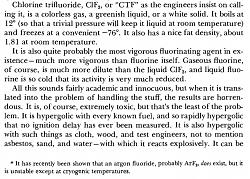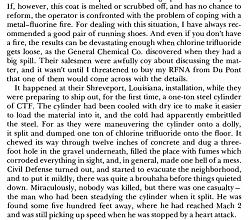THE BACKGROUND:
In my shop I use a lateral file cabinet to keep my 'stuff in bottles and cans'
One drawer is adhesives (3M 77, hot melt sticks, Titebond, extra CA bottle tips, etc.)
One drawer is lubes (WD40, motor oil, grease, etc)
The third drawer is SOLVENTS (Acetone, lacquer thinner, MEK, naphtha, etc.)
I keep my 1 qt. plastic bottle of muriatic acid in that drawer, in a .006" thick polyethylene bag, with a twist-tie on the bag.
Not sure if it 14.5% or 29% (Mr. Lazy Pig Butt doesn't want to walk back out to shop to look)
THE EVIDENCE:
Under the poly bag there is 'rust', or at least it is orangish and slightly wet.
And, INSIDE the bag it is slightly wet and 'rusty'.
The paint on the drawer bottom right under the MA bottle is gone, and when I wiped the 'rust' off that area the paint is stripped and the steel is bare metal clean.
WHAT THE ****??
The plastic bottle is the original bottle, it's been opened a few times for use (like today, getting ugly mineral stains out of our toilet), then TIGHTLY capped - and kept in the poly bag, in the closed drawer, in the shop.
QUESTIONS:
What is going on here?
Why the rust? (OK... acid, I get it - but HOW?)
What is the 'wet'?
Is MA hydrophilic?
Can it propagate through a poly bag and original bottle (I assume it is polyethylene, PEEK, etc. layers)
Any chemists out there?
I'd ask my dad who was a research organic chemist, but he died 6 years ago, so that avenue is closed.
Any thoughts?
Thank you!


 LinkBack URL
LinkBack URL About LinkBacks
About LinkBacks


 Reply With Quote
Reply With Quote




Bookmarks